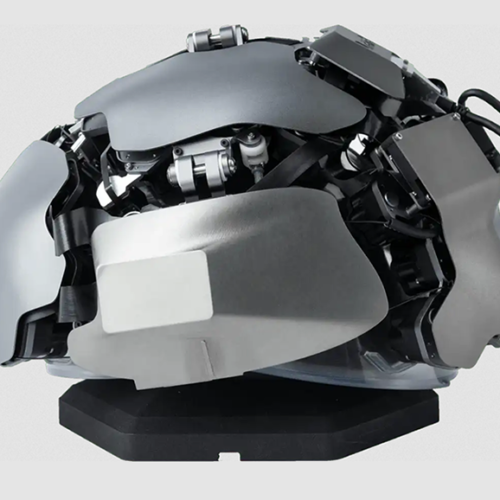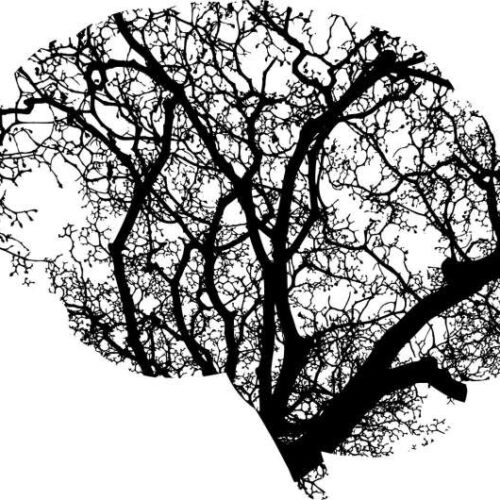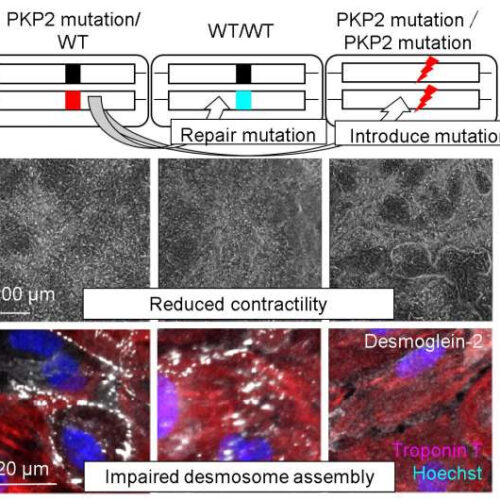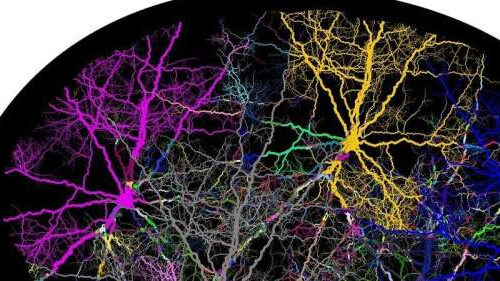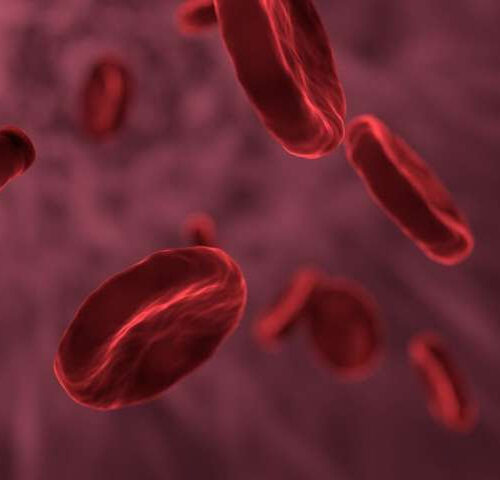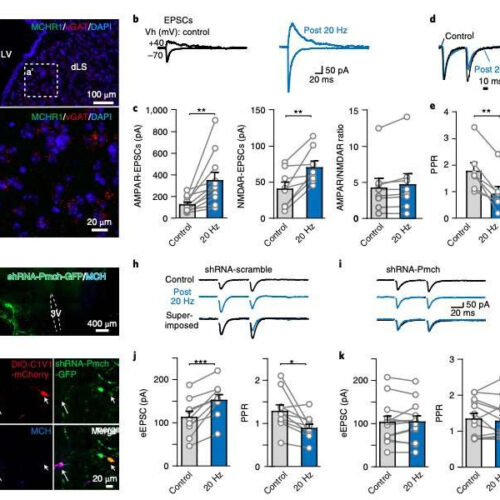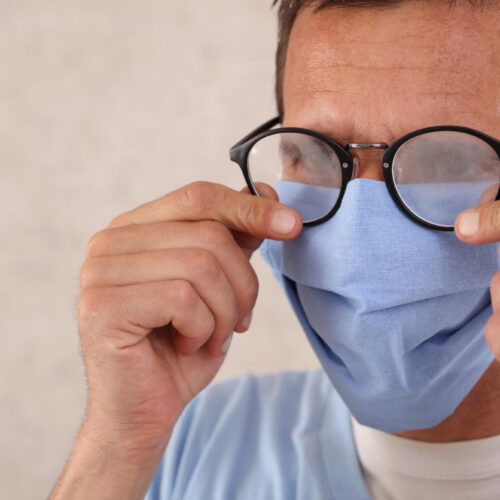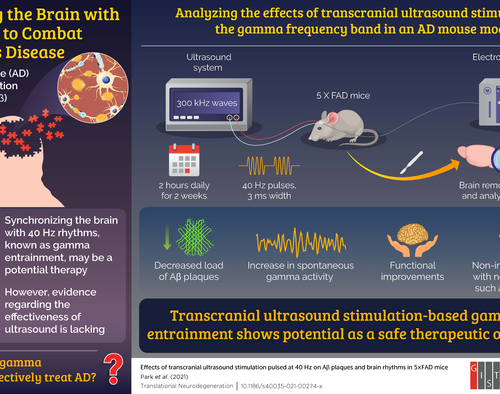JANUARY 21ST, 2022 CONN HASTINGS NEUROLOGY, RADIOLOGY Kernel, a medtech company based in California, has developed the Kernel Flow, a wearable helmet that can perform time domain functional near-infrared spectroscopy (TD-fNIRS) imaging of the brain. The system has a smaller footprint, is less expensive and less complex than benchtop TD-fNIRS systems, but has demonstrated similar imaging...
Silencing a faulty gene may uncover clues to rare forms of ALS
JANUARY 24, 2022 by National Institutes of Health Credit: Pixabay/CC0 Public Domain Using an experimental drug, researchers have been able to suppress a mutated amyotrophic lateral sclerosis (ALS) gene. Studies in mice demonstrate that the therapy could show promise in treating rare, aggressive forms of ALS caused by mutations in the fused in sarcoma (FUS) gene....
Patient-derived heart cells mimic disease in vitro
JANUARY 24, 2022 by Osaka University Fig.1 Reduced contractility and impaired desmosome assembly in isogenic iPS cell-derived cardiomyocytes. (CC BY, © 2022 Hiroyuki Inoue et al., Modeling reduced contractility and impaired desmosome assembly due toplakophilin-2 deficiency using isogenic iPS cell-derived cardiomyocytes. Credit: Stem Cell Reports How can you mend a broken heart? According to researchers from Japan,...
Breathing: The master clock of the sleeping brain
JANUARY 24, 2022 by Ludwig Maximilian University of Munich Credit: CC0 Public Domain Ludwig Maximilian University of Munich neuroscientists have shown that breathing coordinates neuronal activity throughout the brain during sleep and quiet. While we sleep, the brain is not switched off, but is busy with “saving” the important memories of the day. To achieve that,...
Blood proteins could be the key to a long and healthy life, study finds
by University of Edinburgh Credit: CC0 Public Domain Two blood proteins have been shown by scientists to influence how long and healthy a life we live, research suggests. Developing drugs that target these proteins could be one way of slowing the aging process, according to the largest genetic study of aging. As we age, our bodies...
Study: Hypothalamic melanin–concentrating hormone regulates activity in the dorsolateral septum
JANUARY 24, 2022 by Ingrid Fadelli , Medical Xpress MCH enhances excitatory synaptic transmission in the dLS . a, RNAScope in situ hybridization result using probes against MCHR1 and vGAT. b, Sample traces of evoked AMPAR-mediated (Vh =−70 mV) and NMDAR-mediated (Vh =+40 mV) EPSCs in dLS-LHA neurons via field stimulations before (control) and after 20-Hz, 2-min optogenetic...
Fastest DNA sequencing technique helps undiagnosed patients find answers in mere hours
A research effort led by Stanford scientists set the first Guinness World Record for the fastest DNA sequencing technique, which was used to sequence a human genome in just 5 hours and 2 minutes. A new ultra-rapid genome sequencing approach developed by Stanford Medicine scientists and their collaborators was used to diagnose rare genetic diseases in an...
Covid-19 vaccines are not associated with developing neurodegenerative diseases
24 JANUARY 2022 WHAT WAS CLAIMED Covid-19 vaccines could cause neurodegenerative diseases in young people. OUR VERDICT The MHRA has told Full Fact there is “no credible evidence” of an association between the Covid-19 vaccines and neurodegenerative diseases. An Instagram post shares the headline of an online article which claims: “COVID [sic] Shots Could Cause ‘Crippling’ Neurodegenerative Disease in...
PFAS found in high levels in anti-fogging sprays
Interview conducted by Emily Henderson, B.Sc.,Jan 24 2022 Thought Leaders Professor Heather Stapleton, Dr. Nicholas Herkert Duke University In this interview, we speak to Professor Heather Stapleton and Dr. Nicholas Herkert about their latest research that led to the discovery of high levels of PFAS in anti-fogging sprays and cloths. What provoked your latest research...
Researchers from the GIST propose ultrasound stimulation as an effective therapy for Alzheimer’s disease in new study
GIST (GWANGJU INSTITUTE OF SCIENCE AND TECHNOLOGY) IMAGE: ULTRASOUND STIMULATION AS AN EFFECTIVE THERAPY FOR ALZHEIMER’S DISEASE CREDIT: GWANGJU INSTITUTE OF SCIENCE AND TECHNOLOGY With the increase in average life expectancy in many parts of the world, certain age-related diseases have become more common. Alzheimer’s disease (AD), unfortunately, is one of them, being extremely prevalent...

